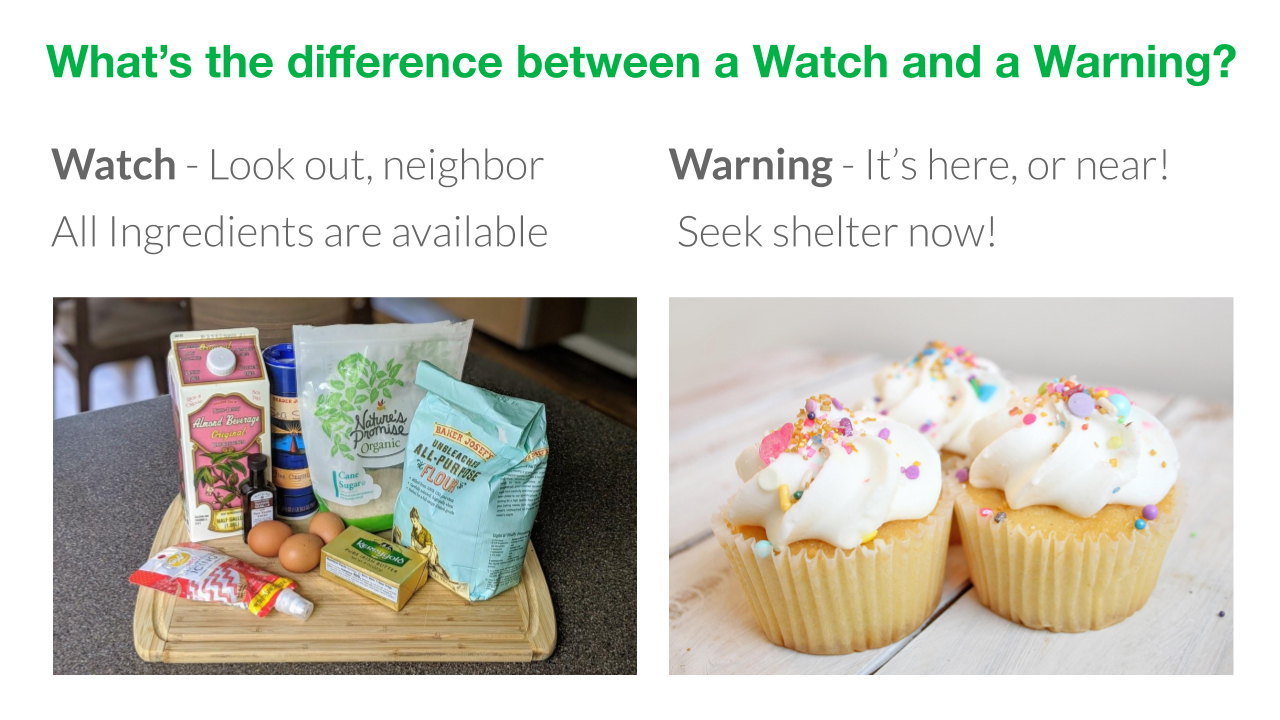We’ve received a lot of great feedback lately from our partners about the suggested posts we’ve been sending out, and you’ve inspired us to write more!
Below are 9 severe weather safety messages to share with your residents on Nextdoor. We recommend sharing one of the following posts each week. You can access a Word document of these posts here.
If you have a suggested post you’d like to contribute or request, leave a comment.
Enjoy the warmer weather!
Table of contents:
- Poll: Do you know the difference between a watch and a warning
- Discussion post: What is the difference between a severe thunderstorm watch and warning?
- Poll: Did you know that a tornado warning means that a tornado is here or near, and you need to seek shelter?
- Discussion post: Poll Recap and what actions should you take if there is a tornado warning.
- Discussion post: What is the difference between an Excessive Heat Watch, Warning, or Advisory?
- Discussion post: Are you familiar with Red Flag Warnings & Fire Weather Watches?
- Poll: Did you know that flooding is the 2nd leading cause of severe weather-related deaths in the U.S (behind heat)?
- Poll: Did you know that most homeowners insurance policies do not cover flooding?
- Discussion post: What you need to know about lightning
Poll: Do you know the difference between a watch and a warning?
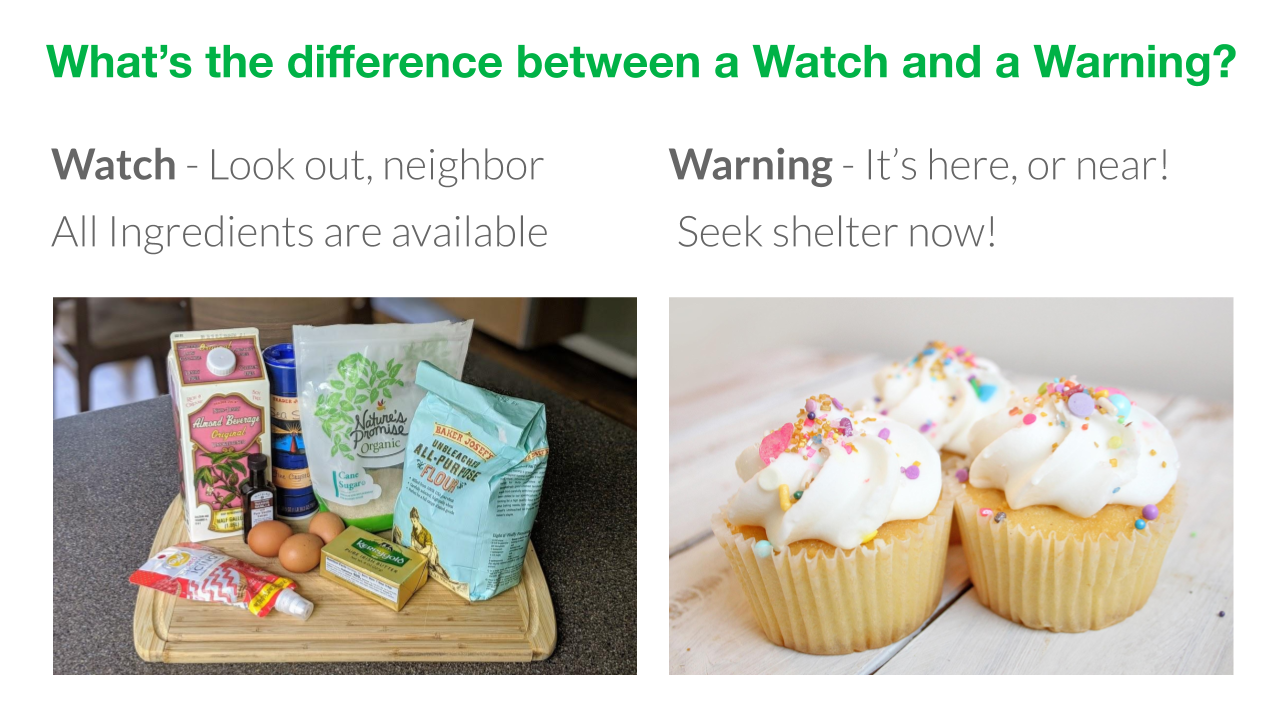
For “Ask a question”: Did you know the difference between a Watch and a Warning?
For “Add a poll description”:
A Watch means all the ingredients necessary for a weather event to happen are available, and you should keep an eye out. A Warning means that a weather event is here or near, and you should take shelter now!
For “Add a choice” fields:
- Yes, I do
- No, I did not, thanks for the explanation
Discussion post: What is the difference between a severe thunderstorm watch and warning?
Subject: What is the difference between a Severe Thunderstorm Watch and Warning?

Neighbors,
Following up on our last post using cupcake ingredients, in this post, we outline the technical differences between a Severe Thunderstorm Watch and Warning.
A Severe Thunderstorm Watch is issued when severe thunderstorms are possible in and near the watch area. It does not mean that they will occur. It only means they are possible. Severe thunderstorms are defined as follows: 1) Winds of 58 mph or higher AND/OR 2) Hail 1 inch in diameter or larger.
A Severe Thunderstorm Warning is issued when severe thunderstorms are occurring or imminent in the warning area.
If you have a tip for your neighbors on how to remember the difference or have a question, please leave it below in the comments.
Poll: Did you know that a tornado warning means that a tornado is here or near, and you need to seek shelter?
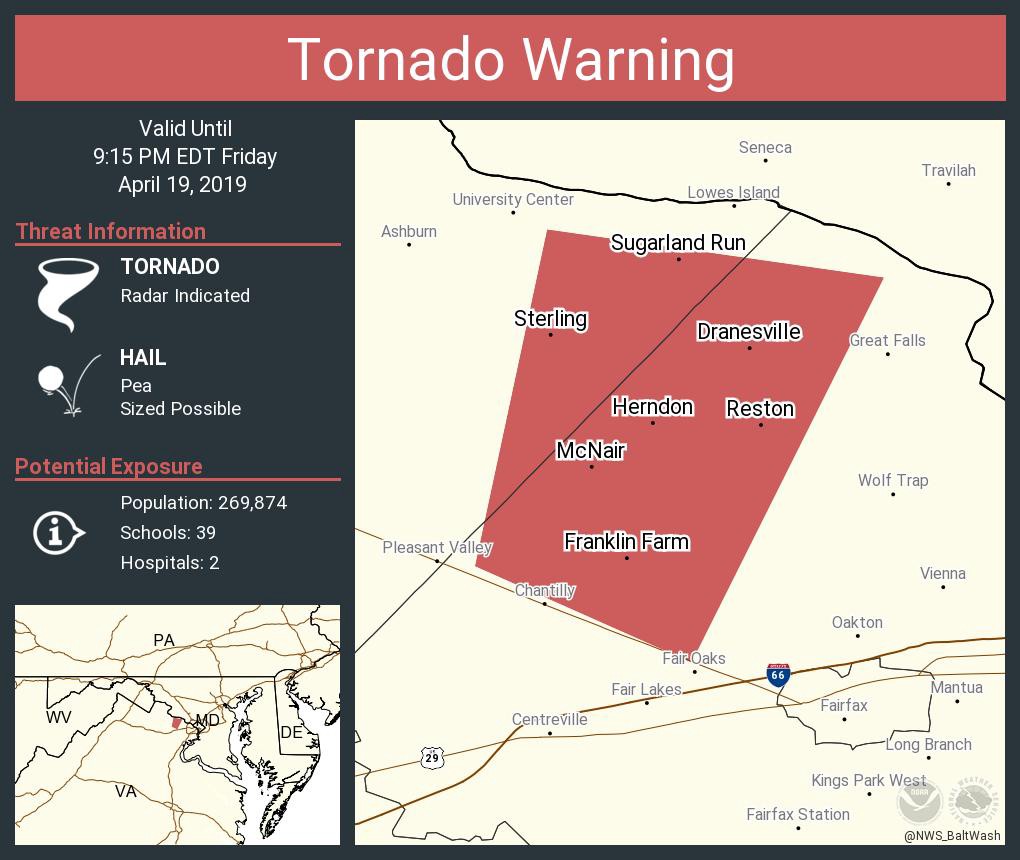
For “Ask a question”: Did you know that Tornado Warning means that a tornado is here or near and you need to seek shelter?
For “Add a poll description”:
Neighbors, when a tornado warning is issued, it means that a tornado is here or near, and you should take shelter immediately while checking for forecast updates.
A Tornado Watch is issued when severe thunderstorms and tornadoes are possible in and near the watch area. It does not mean that they will occur, It only means they are possible as all the ingredients are available.
If you have experienced an actual tornado or a tornado warning, share your story below in the comments.
For “Add a choice” fields:
- Yes, I did
- No, I did not
Discussion post: Poll Recap and what actions should you take if there is a tornado warning
Subject: What action should you take if there is a tornado warning?
Image:
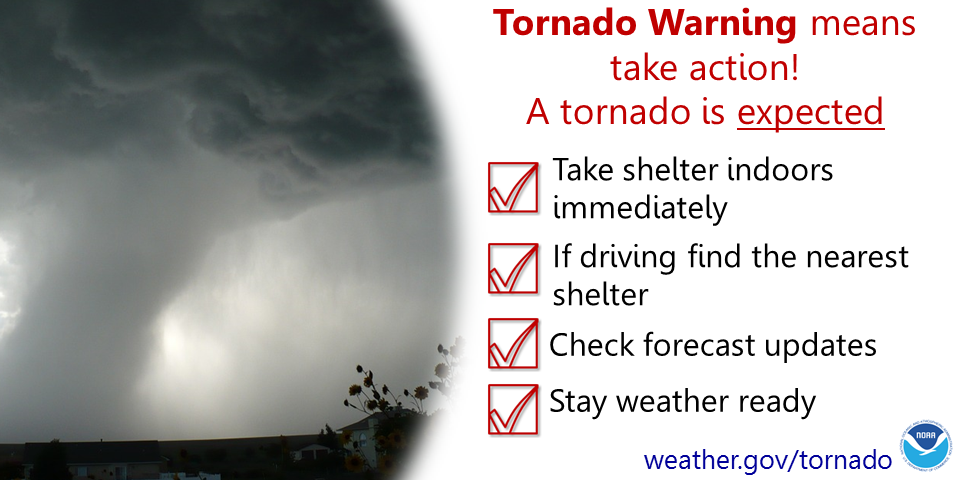
Neighbors,
Thank you to the [Number of poll votes] of you who took time to cast your vote and [Number of replies] of you who replied to my poll about whether or not you knew that a tornado warning meant that a tornado is expected.
[% of people who voted] of you voted that you already knew this.
The question now becomes if you do get a tornado warning, what should you do?
IF YOU ARE IN A BUILDING:
Go immediately to the lowest level of your building to an interior room or hallway, ideally to a pre-designated shelter area such as a safe room, basement or storm cellar.
- If there is no basement, go to the center of an interior room on the lowest level (closet, interior hallway) away from corners, windows, doors, and outside walls.
- Put as many walls as possible between you and the outside. Get under a sturdy table and use your arms to protect your head and neck.
- Stay away from windows and doorways.
- In a high-rise building, go to a small interior room or hallway on the lowest floor possible.
- Watch out for flying debris. Flying debris from tornadoes causes most fatalities and injuries.
IF YOU ARE IN A VEHICLE:
- If you are driving and can’t get to a safe shelter, stay in the vehicle with your seatbelt on. Put your head down below the windows; cover your head with your hands and a blanket, coat or other cushion if possible.
- Do not get under an overpass or bridge. You are safer in a low, flat location.
- Never try to outrun a tornado in an urban or congested area in a vehicle. Instead, leave the vehicle immediately for safe shelter.
Let me know if you have further questions by leaving a comment.
Thanks!
Discussion post: What is the difference between an Excessive Heat Watch, Warning, or Advisory?
Subject: What is the difference between an Excessive Heat Watch, Warning, or Advisory?
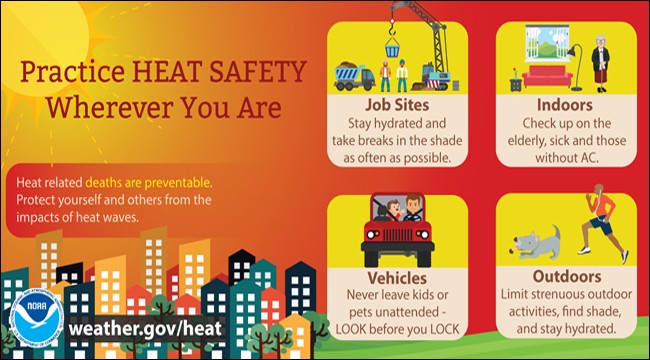
Neighbors,
A common question that we get asked all the time is “what is the difference between an Excessive Heat Watch and Warning, and how do they differ from a Heat Advisory?”
Below are the answers:
EXCESSIVE HEAT WATCH
An Excessive Heat Watch is issued when there is a potential for the heat index value to reach or exceed 110 degrees or 105 degrees within the next 24 to 48 hours.
EXCESSIVE HEAT WARNING
An Excessive Heat Warning is issued when the heat index value is expected to reach or exceed 110 degrees or 105 degrees within the next 12 to 24 hours. An Excessive Heat Warning may be issued for lower criteria if it is early in the season or during a multi-day heat wave.
HEAT ADVISORY:
A Heat Advisory is issued when the heat index value is expected to reach 105 to 109 degrees (east of the Blue Ridge) or 100 to 104 degrees (west of the Blue Ridge) within the next 12 to 24 hours. A Heat Advisory may be issued for lower criteria if it is early in the season or during a multi-day heat wave.
Share your tips on how you stay cool and how you keep an eye out for neighbors who are vulnerable when it gets really hot outside.
Discussion post: Are you familiar with Red Flag Warnings & Fire Weather Watches?
Subject: Are you familiar with Red Flag Warnings & Fire Weather Watches?
Screen capture is taken from http://www.readyforwildfire.org/
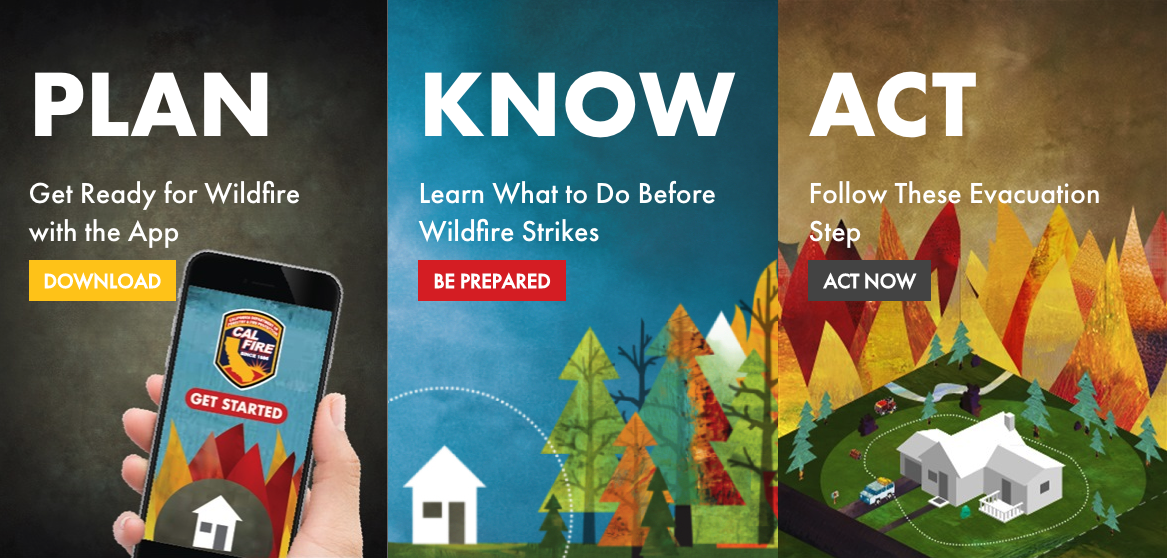
In recent years wildfires have taken center stage resulting in billions of dollars worth of damage and costing hundreds of people their lives.
The National Weather Service issues Red Flag Warnings & Fire Weather Watches to alert fire departments of the onset, or possible onset, of critical weather and dry conditions that could lead to rapid or dramatic increases in wildfire activity.
With this said, it’s important to understand what Red Flag Warnings & Fire Weather Watches and mean. Below are their definitions, and we invite you to share and speak to your family, neighbors, and friends about these definitions as understanding them could save your life and theirs.
A Fire Weather Watch is issued to alert fire officials and firefighters of potentially dangerous fire weather conditions within the next 24 to 36 hours.
If you have any questions, please ask them below.
Poll: Did you know that flooding is the 2nd leading cause of severe weather-related deaths in the U.S (behind heat)?
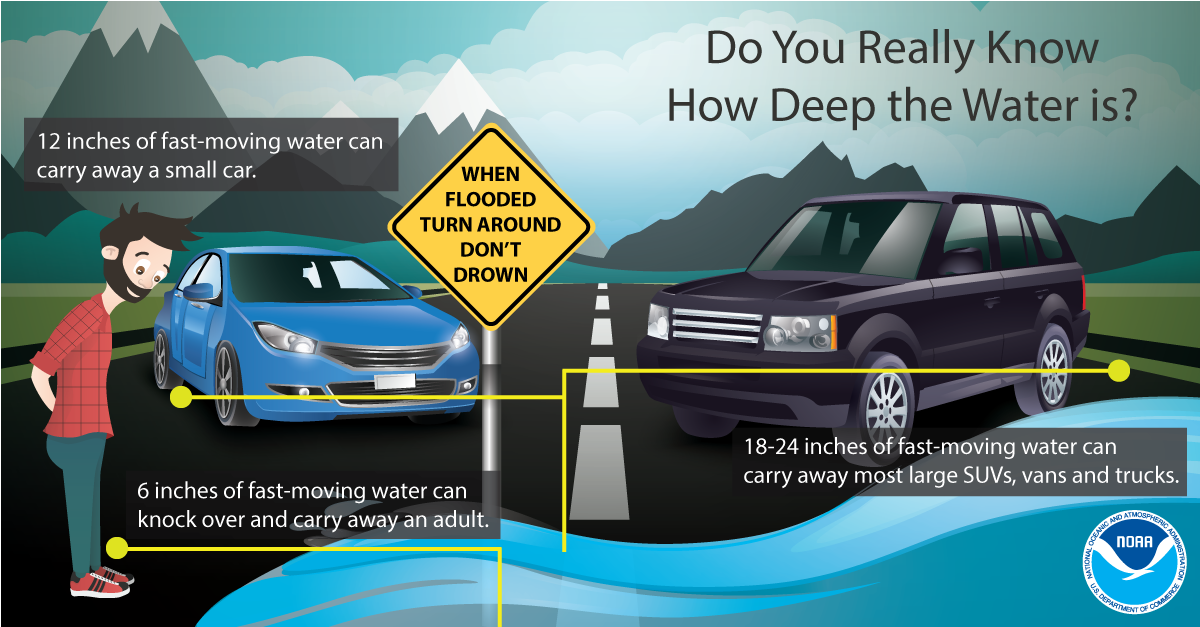
For “Ask a question”: Did you know that flooding is the 2nd leading cause of severe weather-related deaths in the U.S (behind heat)?
For “Add a poll description”:
Neighbors,
It is true, flooding is the 2nd leading cause of weather-related fatalities in the U.S. (behind heat). On average, flooding claims the lives of 95 people each year. Did you know that more than half of all flood-related deaths are drownings that result from vehicles caught in flood waters and then swept downstream? Many of these drownings are preventable if people do not drive or walk through flooded roads, sidewalks, etc.
People often underestimate the power of flowing water. A mere 6 inches of fast-moving flood water can knock an adult off their feet. Most vehicles begin to lose contact with the road in six inches of water. They can be swept away in 12–18 inches of flowing water. This includes pickups and SUVs. When approaching a flooded roadway remember, Turn Around Don’t Drown!
Have you been caught in a flood, or have a tip? Share them below in the comments below.
For “Add a choice” fields:
- Yes, I did
- No, I did not, thanks for the info!
Poll: Did you know that most homeowners insurance policies do not cover flooding?
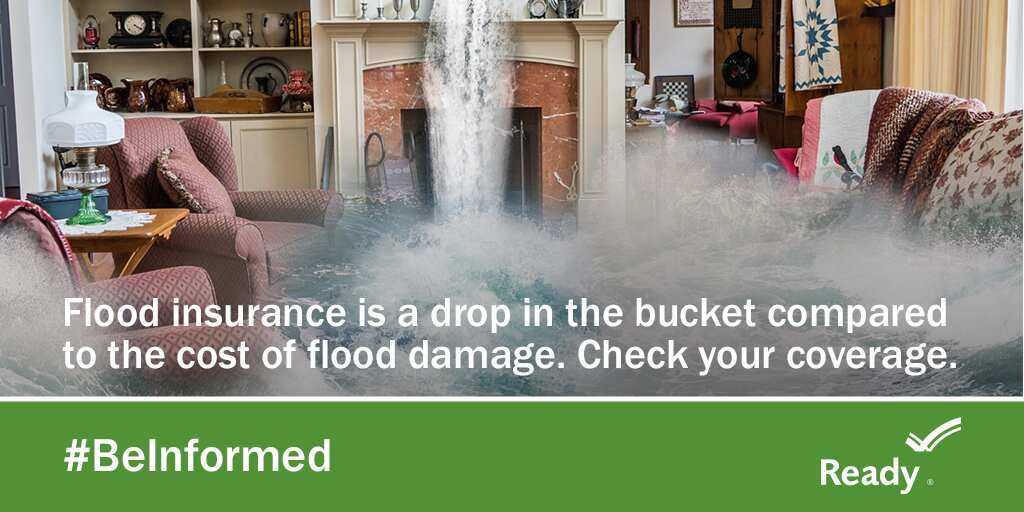
For “Ask a question”: Did you know that most homeowners insurance policies do not cover flooding?
For “Add a poll description”: Flooding is one of the most costly types of damage to a home, most people do not know that they must purchase a separate flood insurance policy. Let us know if you knew this by selecting one of the options below. Also, if you have been affected by flooding, feel free to share some lessons learned as a comment.
For “Add a choice” fields:
- Yes, I did
- No, I did not
Discussion post: What you need to know about lightning
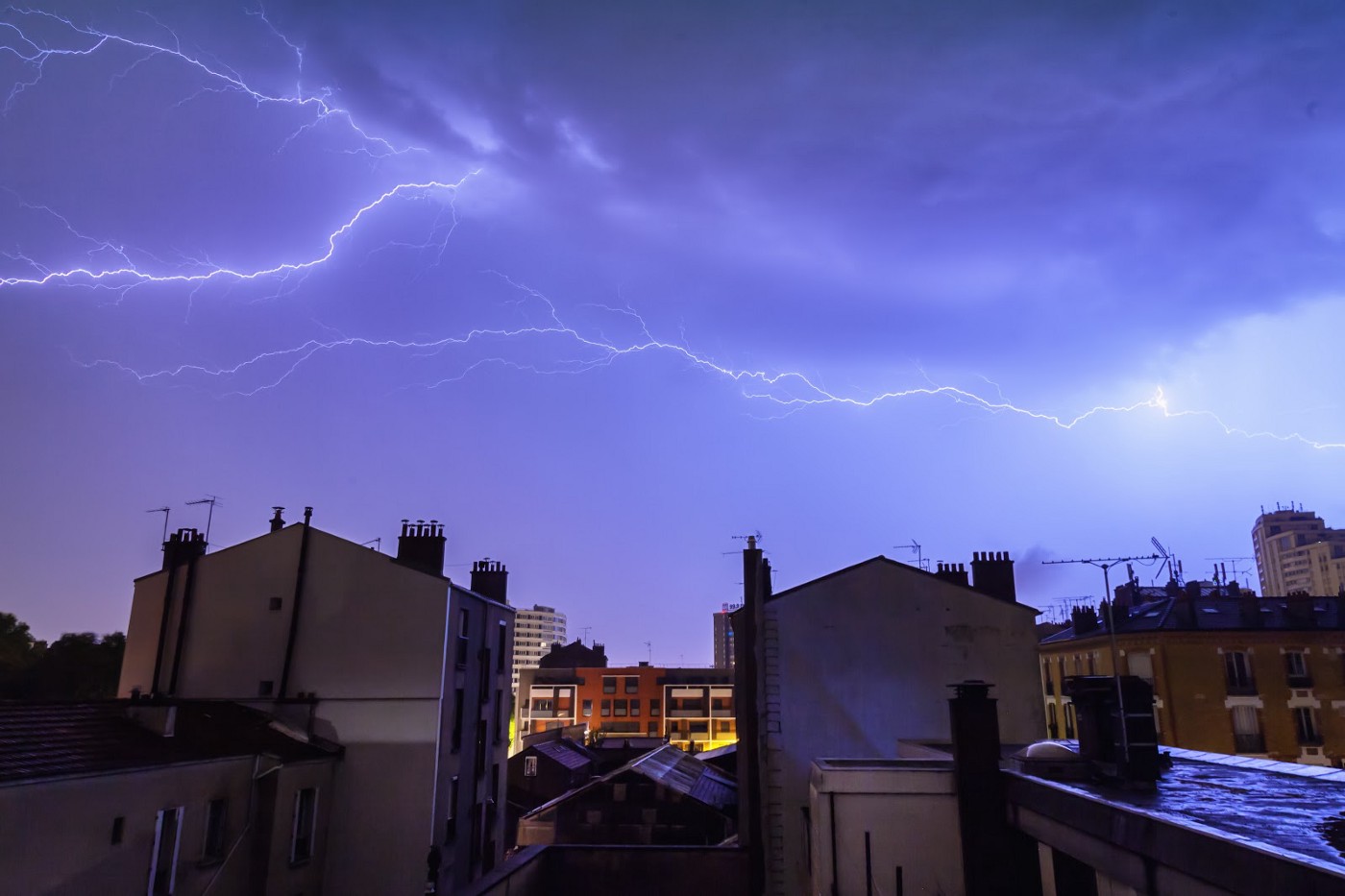
Dear neighbors,
Have you heard the expression, when thunder roars, go indoors? Likely so and that is because NO PLACE outside is safe when thunderstorms are in the area! If you hear thunder, lightning is close enough to strike you and should immediately move to safe shelter.
What is considered shelter? Shelter is a substantial building with electricity or plumbing or an enclosed, metal-topped vehicle with windows up. You should stay in safe shelter at least 30 minutes after you hear the last sound of thunder.
If you are already inside, follow these tips:
- Stay off corded phones, computers and other electrical equipment that put you in direct contact with electricity.
- Avoid plumbing, including sinks, baths, and faucets.
- Stay away from windows and doors, and stay off porches.
- Do not lie on concrete floors, and do not lean against concrete walls.
If you are caught outside with no safe shelter anywhere nearby the following actions may reduce your risk:
- Immediately get off elevated areas such as hills, mountain ridges or peaks
- Never lie flat on the ground
- Never shelter under an isolated tree
- Never use a cliff or rocky overhang for shelter
- Immediately get out and away from ponds, lakes and other bodies of water
- Stay away from objects that conduct electricity (barbed wire fences, power lines, windmills, etc.)
If you have other tips or an experience you want to share, leave them below as a comment.

